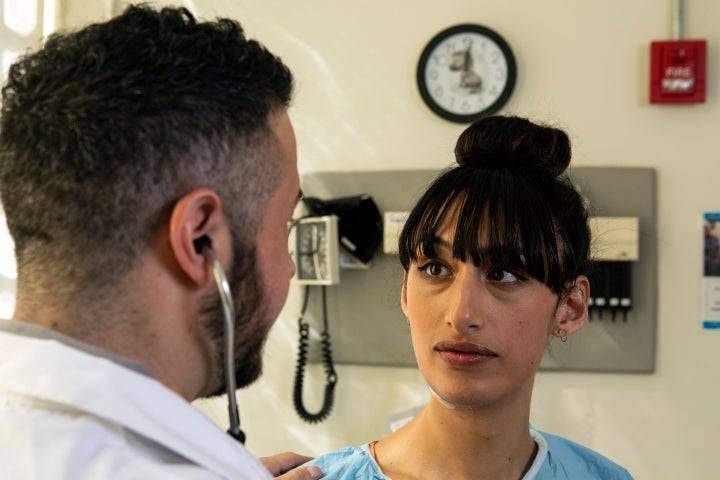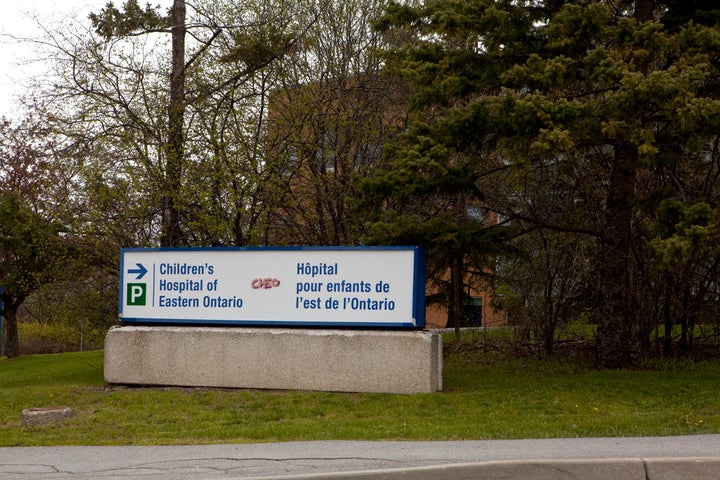
“I was told due to my nonbinary identity that I was ‘too fluid’ to transition and receive the services I wanted.”
This is just one of more than 50 negative experiences trans youth and their caretakers had while accessing transition-related health care, according to a groundbreaking report from Support And Education For Trans Youth Ottawa (SAEFTY).
Participants’ concerns with the Gender Diversity Clinic at the Children’s Hospital of Eastern Ontario included unnecessarily long wait times; medically unnecessary physical exams and uncomfortable or invasive questions; and feeling that clinicians didn’t take them and their gender seriously.
“This isn’t only about CHEO. The issues identified at this clinic are indicative of a broader problem.”
Stories like theirs demonstrate how, despite the best of intentions, contemporary health care continues to fall short of providing inclusive health care to trans people.
One participant said, “I was very clear and confident about what I wanted and I was not taken seriously, leading to two years of appointments with huge wait times before receiving a referral to an endocrinologist outside of [CHEO]. Also, my doctor forgot to actually refer after he said he would, leading to an additional six months of waiting.”
Another said, “I didn’t feel I was in a safe enough place to ask [clinic staff] to use they/them pronouns for me due to previous experiences in which they invalidated my nonbinary identity.”
Perhaps most disturbing were unnecessary physical examinations intended to satisfy professional curiosity: “[T]he specialist… asked if I masturbated with it after observing clitoral growth... I understand it came from a place of professional curiosity but it strikes me as inappropriate to ask a 17-year-old when the answer doesn’t affect anything other than curiosity.”
In truth, this isn’t only about CHEO. The issues identified at this clinic are indicative of a broader problem — the failure of Canadian health care to provide inclusive and affirming care to trans and gender-diverse kids.

Trans people have been forced by their health-care providers to jump through unnecessary and discriminatory hoops to access the transition-related health care — from hormones and surgeries, to simple, non-medical therapeutic supports — that helps us live in the world as the gender we know ourselves to be.
Historically, trans people have been treated as deranged and deviant in health care, forced to go through invasive and traumatic assessment processes where they had to conform to outdated and fundamentally sexist gender roles — expecting trans women to be hyperfeminine, wear heels, makeup and dresses — in order to access hormones and surgeries.
As well, they would have to pass an often highly dangerous process called a “real-life experience test,” where they would have to live for years as their “internal” gender before they would be granted access to transition-related health care. In a world where gender non-conformity is policed through violence, harassment and abuse, this has forced trans people to open themselves up to these dangers in order to access life-saving medical services.
“Kids are most likely to grow into healthy adults when they are trusted as the best experts on their own gender.”
This violence and pathologization rooted in early trans-specific health care remains embedded in the contemporary provision of trans health services, and can still be seen in the unpleasant experiences of young trans people at CHEO’s Gender Diversity Clinic, among many others.
Over the past decade, we’ve seen incredible improvements in trans health care, including a new theory of care — the gender-affirming model, acknowledged as the gold standard in trans-inclusive health care. The gender-affirming model is built on the basic premise that trans and gender-diverse kids are most likely to grow into healthy adults when they are trusted as the best experts on their own gender, and when their gender — whatever it may be — is supported by those around them. It doesn’t assume someone is trans, or that transition entails any particular path, but that any given individual, when given the space to explore their gender and guide their transition, is more likely to thrive.
‘We know ourselves best’
SAEFTY’s report is indicative that a conversation about the transphobia embedded in our systems — and what exactly we should be doing about it — hasn’t yet taken place within Canadian health care.
Creating unnecessary barriers that force trans kids to “prove” their gender identity to their health-care providers is always based in a transphobic notion that our identities are a phase, that we are faking our experiences, or that our transness is a mental illness that must be justified and diagnosed.
We know ourselves best — we are not a diagnosis or a recent fad, and we deserve access to the health care we know we need. At the most basic level, trans people are more likely to report positive health when given access to transition-related health care.
It’s time that health-care services at large embraced a gender-affirming approach to providing care for trans youth.
Have an opinion you’d like to share on HuffPost Canada? You can find more information here on how to pitch and contact us.
Related video on HuffPost: Sam’s Wait: A Life On Hold